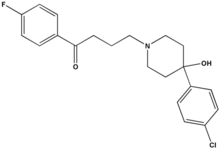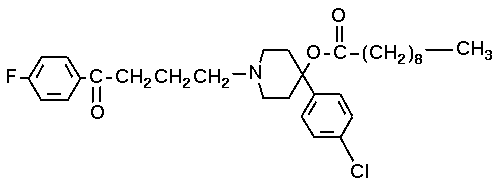Malraux: A Life, by Olivier Todd (Knopf, 560 pp., $35)
FEW men live the sort of life they imagine for themselves in the boldest daydreams of youth. Andre Malraux (1901-1976) was one of the few. Swashbuckling was his primary vocation; shouldering his way into the world's most perilous corners, loving the test of nerve, loving even more the general adulation for his feats of daring, he seemed to spend his days swinging from chandeliers with rapier in hand, after the Douglas Fairbanks manner. And of course he wrote, often about himself and men like him, the intimate companions of violent death. As one learns from Olivier Todd's fascinating biography, he was fond of quoting Napoleon's proclamation, "My life is quite a novel." One of Malraux's two best novels, Todd concludes, was "his own staggering, rollicking life."
Most writers, and especially French writers, scorn the bourgeois life, defined since Rousseau's famous sneer by its fear of violent death and its devotion to selfish pleasures of small consequence. Malraux despised it with particular ferocity. The son of an improvident businessman who skipped out on his family when Andre was an infant, the young Malraux could not bear the tedious drill of school, and ended his formal education at 16. Victor Hugo, a paragon of demonic energy who lived as ardently as he wrote, became Malraux's model of artistic and political nobility. They were indeed similar, writes Todd: "So many lives in one, so many talents in one man." Malraux tried this and that in the hopes of striking it rich. He earned a living as a rare-book dealer, wrote criticism for little magazines, published expensive editions of highbrow pornography. Fabulous schemes beguiled him. He sank his young wife's fortune, almost a million dollars in today's money, into Mexican mining shares, and lost the bundle.
A steady job was unthinkable, but plunder always remains a viable option for the venturesome. At 23, Malraux took his wife, Clara, on an expedition to the Cambodian jungle, where they excised some beautiful stone carvings from an ancient Khmer temple, with an eye toward selling them in America. The colonial authorities nabbed the couple, and sentenced Malraux to three years in prison. The faithful Clara enlisted the aid of prominent French literary men, who petitioned that the judiciary show leniency to a young man who one day would surely increase "the intellectual wealth of our country." No imperial functionary longing for Paris could resist the importunities of Andre Gide and Francois Mauriac, and Malraux's sentence was suspended. Before long he was back in Indochina as editor of a newspaper that derided the French civilizing mission and pressed for liberation of Annam (a region in today's Vietnam). That particular anti-imperialist fantasy dissipated after a year or so, but the afterglow would last a lifetime.
Malraux's Indochinese adventures would furnish matter for his first four novels: The Temptation of the West (1926), an exchange of meditative letters between two young intellectuals, one French, the other Chinese; The Conquerors (1928), a testimonial to revolutionary will, invincible even in the face of death; The Royal Way (1930), a gripping account of archaeological plunder in the Cambodian jungle and of the half-mad white man who would be king of a remote native tribe; and Man's Fate (1933), Malraux's finest novel (though Todd gives that distinction to Man's Hope), about the 1925-27 Chinese revolution in which Chiang Kai-shek's revolutionaries of the Right turned on their sometime Communist allies and, at least in Malraux's telling (Todd says it never happened), burnt them alive in locomotive boilers.
Life without danger was no life at all for Malraux. "One must risk death, not to die but in order to live," he wrote to a friend in 1934, after a cyclone had nearly brought down a small plane in which he was flying. That year with a pilot friend he flew over the Yemeni desert in quest of the lost city of Sheba, capital of the Biblical queen. Bedouin riflemen fired at them from the ground, and their fuel ran dangerously low, but Malraux claimed to have found the city; every respectable archaeologist scoffed, and in response Malraux's descriptions of his find only grew ever more bold and extravagant. Extravagant boldness was his style. He tried to organize a commando raid of especially manly writers to rescue Trotsky from Stalin, who had exiled his rival to Alma-Ata; fortunately, there were no takers. He commanded a Republican air squadron in the Spanish Civil War, although he had never flown a plane; from this wartime experience he wrote Man's Hope (1937), which for a socialist apologia offers a surprisingly astute consideration of political intelligence as it moves between theory and action. He served in the Resistance under the pseudonym Colonel Berger, after the hero of the novel he had just written, The Walnut Trees of Altenburg. "When one has written my books, one fights," Malraux insisted. Todd declares, "Malraux detests war in theory, but in practice ... he is attracted and obsessed by it."
Malraux was certainly obsessed with his image as the most warlike of writers--so obsessed, in Todd's account, that he lied endlessly about his exploits. No matter how brave he was in fact, he was never enough to satisfy his fantasy of himself; to astound the world with his derringdo, significant male enhancement was called for. Todd punctures Malraux's inflated rendition in Anti-Memoirs (1967) of his capture by the Nazis, and shows that Malraux parlayed a decoration awarded under false pretences into a legendary reputation as one of the greatest Resistance warriors.
With careful nurture, legends grow and grow. Relying on a Malrucian canard that had gained credence through sheer repetition, Richard Nixon asked to speak with Malraux before embarking on his landmark 1972 summit with Mao Tse-tung; the word was that Malraux had taken part in the 1927 Chinese revolution, had known Mao and Chou En-lai in China then, and had stayed in touch with them since. In fact Malraux had had nothing to do with Chinese revolutionaries except writing novels about them, and had enjoyed one rather brief and perfunctory interview with the two Chinese leaders in 1965, which in Anti-Memoirs he made out to be an epic exchange of profundities among three world-historical figures. According to Todd, Malraux was so rapt in his own gross toadying that he failed to appreciate the contemptuous treatment Mao dished out to him.
At the time of that interview, Malraux was minister of culture in de Gaulle's government--not exactly a socialist gig-but he always had a soft spot for the revolutionary heroes he had revered as a younger man. About them he was an inveterate fantasist as well. Although he was sufficiently frank to disparage socialist realism in literature at the Soviet Writers' Conference in Moscow in 1934, he subsequently retreated from his own honesty about Communist failures. Some writers are more scrupulous about honoring the truth than others. In 1937 Andr, Gide repented of his own infatuation with Communism, writing in Return from the USSR that the Soviet Union "has betrayed all our hopes." Malraux essentially dismissed Gide's critique and averred, "Trotsky is a major moral force in the world, but Stalin has restored dignity to the human race." With Malraux, Todd writes, "an imaginary socialism gets the upper hand on socialism as it exists."
In politics Malraux came up short on moral courage. Yet in the face of terrible personal loss he did show a rare mettle. The body count of his loved ones who met a violent end leaves one reeling. Malraux's father committed suicide; his two half-brothers were killed in World War II; the love of his life, Josette Clotis, fell under the wheels of a train; their two sons died in a car wreck. Somehow he endured the blows without losing his mind completely, although in his last years he did descend into alcoholism and sometimes relied on Haldol, a potent anti-psychotic that tends to leave one temporarily brain-dead.
Suffering and death were the great themes of his work, and it seems they sought him out at least as ardently as he went looking for them. To understand "the supreme riddle of 'What am I doing on this earth where sorrow reigns?'" was the object of his thought and action. He thought he found the answer: In the fraternity of les miserables, and of the spirited revolutionaries who are willing to kill and die for them, Malraux discerned the affirmation of the life he led, and indeed of life itself.
In his romantic persona, his wanderlust, his literary accomplishment, his political engagement, and his familiarity with violent death, the figure most like Malraux is Francois-Rene de Chateaubriand. Yet a fundamental difference strikes one. In his Memoirs from Beyond the Tomb 1849-50), Chateaubriand describes with harrowing precision a French revolutionary mob he watched from his window in 1789; the murderers sang and danced and jumped about as they flaunted two heads on pikes, one dead man's eye hanging out of its socket, the pike protruding from his open mouth. Chateaubriand, a nobleman but a champion of the Rights of Man, cried out to the mob, "Brigands! Is that how you understand liberty?" Hating the mad viciousness that defiled the noble ideals of liberty, equality, and fraternity, Chateaubriand became perhaps the original neoconservative. By contrast, Malraux never entirely got over his love for the glamour of violence, his esteem for those who will bear and inflict any suffering for the revolutionary cause they serve, as though it were violent death en masse that justified the dream of socialist justice rather than socialism that justified violent death. For this wondrously gifted man, one life seemed hardly enough to contain his passions; yet in the end one suspects it was not life that Malraux really loved.
Mr. Valiunas is the author of Churchill's Military Histories: A Rhetorical Study.
COPYRIGHT 2005 National Review, Inc.
COPYRIGHT 2005 Gale Group



